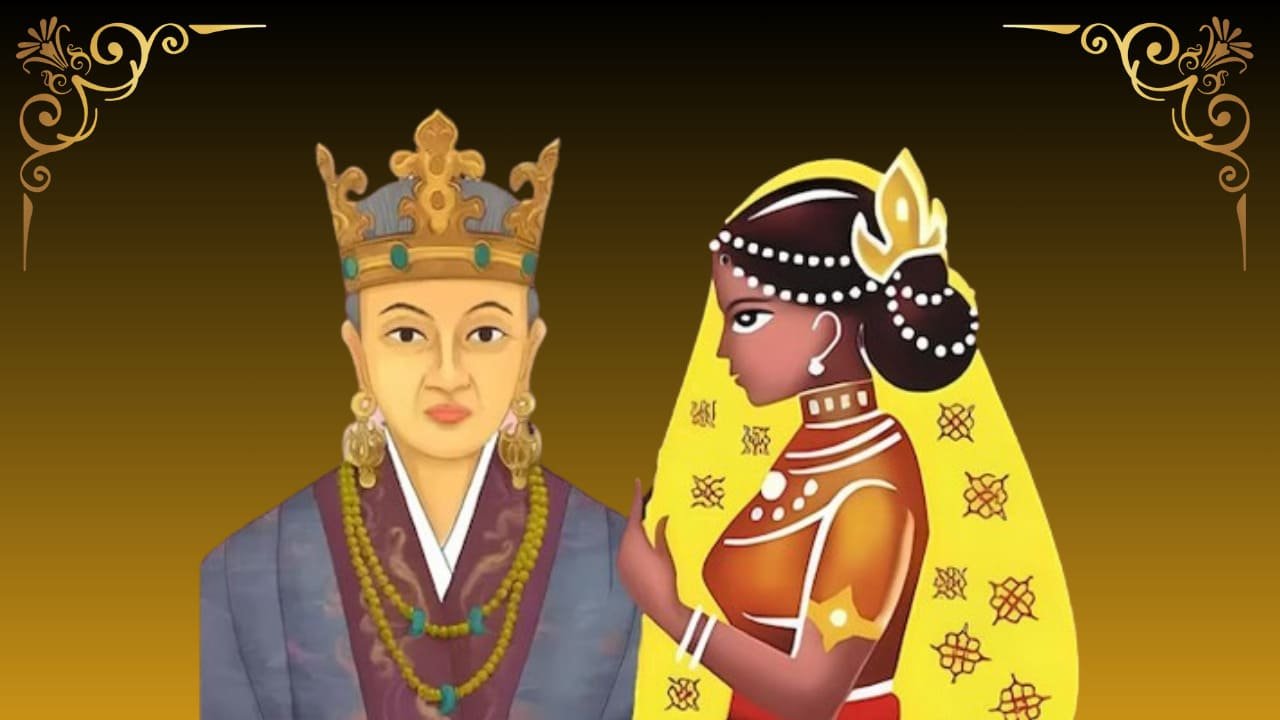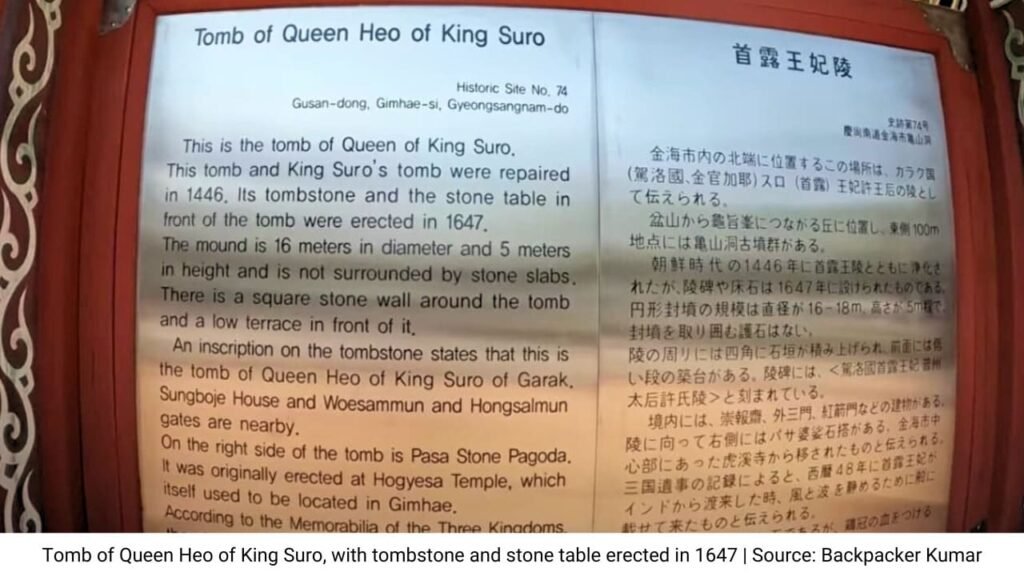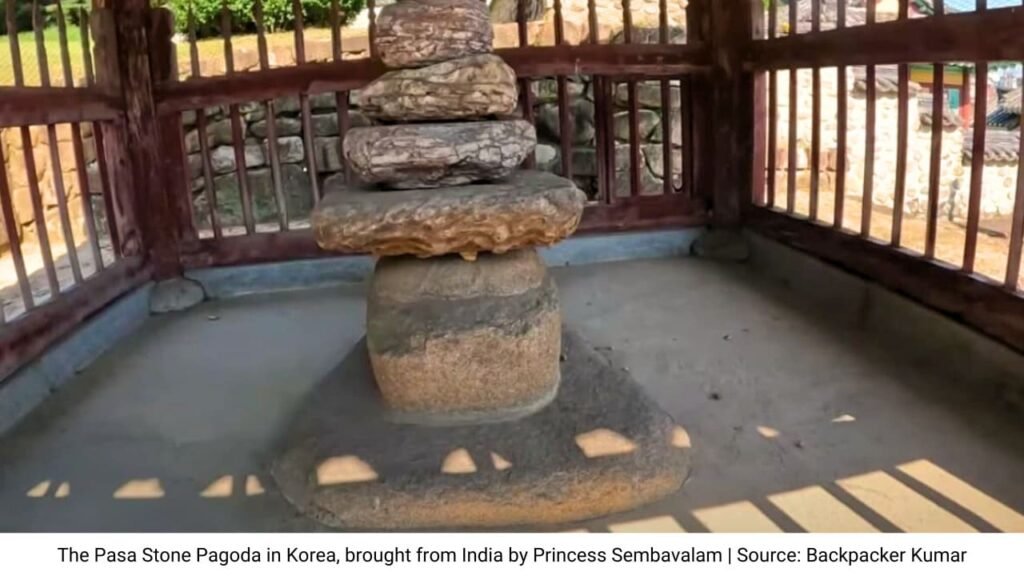
Table of Contents
When I first came across the story of Princess Sembavalam, it felt like I had stepped into the pages of a historical novel. This part of Indian history is largely unknown to many but I am confident we will see a blockbuster movie inspired by this story of an Indian princess someday in the future.
This story is of a 16-year-old Indian princess who travelled to Korea thousands of years ago to find her groom due to a divine revelation. Princess Sembavalam (aka Heo Hwang-ok in Korea) of the ancient Pandyan Dynasty is an unpopular historical figure who represents a bridge between the rich cultures of Tamil Nadu, India, and Korea. Her journey over 2000 years ago not only linked her destiny with King Kim Suro of Korea but also forged deep cultural similarities that resonate to this day.
Many references in this article are inspired by the ancient Korean book “SAMGUK YUSA” written by a Buddhist monk during the 13th Century. This article explores her life, and origin, and tries to answer why there are so many similarities between Tamilians and Koreans.
Royal Origins

Born into the royal family of the Ayuta Kingdom, now identified with Kanyakumari in South Tamil Nadu, Princess Sembavalam was raised in an environment steeped in soft power diplomacy and maritime trade. The Pandyan Empire, known for its naval prowess, spread its roots well across distant lands, inspiring Princess Sembavalam’s role as a cultural emissary in the future.
Her upbringing was marked by an education in the arts and governance, preparing her for the significant diplomatic responsibilities she would later shoulder.
Historic Voyage
A divine revelation in her parents’ dreams, asked them to send their daughter to Gaya (Kingdom of Korea). After this, the young Princess Sembavalam embarked on a voyage that changed the course of history. Her journey was not merely matrimonial but a mission to establish strong cultural and economic ties with Korea.
Accompanied by a retinue of courtiers, cultural emissaries and slaves, she brought with her treasures and traditions from Tamil Nadu, some of which can even now be seen in her memorial in South Korea. This journey highlighted the ancient Tamil practice of leveraging maritime capabilities to spread their cultural influence.
Royal Marriage
Upon her arrival in Gaya in 48 CE, Princess Sembavalam married King Kim Suro, the first king of the Gaya kingdom. Ancient texts have references showing how similar to Princess Sembavalam’s parents, a divine revelation also appeared in King Kim Suro’s dreams, which told him a princess would soon arrive at his shores. This marriage was celebrated as a strategic alliance that would bring about a profound cultural integration. Their marriage was marked by lavish ceremonies that blended Tamil and Korean traditions, symbolizing the harmonious fusion of the two cultures.
Her True Origin: The Heart of Tamil Nadu

There is still a big debate around the true origin of Princess Sembavalam. Many say as she mentioned belonging to Ayuta Kingdom, she is from Ayodhya, but the historical shreds of evidence point us towards another conclusion. Let me share some interesting facts for some more clarity:
Fact 1: When Samguk Yusa, the main origin of this story was written during the 13th Century, Ayodhya was known as Saketa, and Kanyakumari as Ayuta.
Fact 2: Princess Sembavalam upon her arrival spoke about her seaborne journey while Ayodhya had no sea or port facilities during that period.
Fact 3: She brought with her an emblem which carried the symbol of twin fish in a trident. This symbol is a hallmark of the Pandyan Kingdom, which can be seen in all their ancient flags, coins, and official seals.
Fact 4: Her name, Sembavalam, which means ‘Red Coral’ in Tamil, has the same meaning as her Korean name, Heo Hwang Ok. Too much of a coincidence. Ain’t it?
Fact 5: During her journey, she carried seven stones to ward off maritime disasters, a tradition known as ‘Nadukal’ in ancient Tamil Nadu. We can still find these stones in her tomb in Korea.
Still, do you have doubts? Well, do read the next section.
Similarities Between Tamil and Korean Cultures

Linguistic Ties
The Tamil and Korean languages share over 500 words, a testament to the deep historical interactions between these regions. Words like “Amma” (mother) and “Appa” (father) highlight these linguistic bridges. This shared vocabulary suggests prolonged contact, likely facilitated by traders and emissaries like those who accompanied Sembavalam and those who continued to travel between the distant lands afterwards.
Food Choices
There are also many similarities in the food choices, from rice cakes to fermented dishes and to having a taste bud for spicy food, you can find many similarities between Tamil and Koreans. The famous Korean dish Mandu (meat, vegetables and tofu filled) is very similar to Tamil Nadu’s kozhukattai. Athirasam, a deep-fried south Indian sweet, is similar to Korea’s Yakgwa. Korean’s Juk (Rice Porridge) is called kanji in Tamil Nadu. Like Tamil Nadu’s idiyappam, they have hand-pulled noodles called myron. This list can go on forever, so I will stop before you turn hungry and leave this article in the middle.
Art and Dance: Cultural similarities are also reflected in traditional dance forms. The Tamil ‘Kummi’ and Korean ‘Ganggangsullae’ are both communal dances performed in circles, typically during harvest festivals. These dances not only reinforce the agricultural roots of both societies but also their communal approaches to the celebration.
Lasting Legacy
The descendants of Princess Sembavalam and King Kim Suro, including major Korean clans like Gimhae Kim, Heo, and Lee, are a living testament to her lasting impact. Today, nearly six million Koreans, which is almost 10% of their population, trace their ancestry back to this marriage, a remarkable legacy of the cultural and genetic bonds formed through her marriage. Heo Hwang-Ok aka Indian Princess Sembavalam is worshiped as a deity in Korea. How many Indians know about this?
Conclusion: Enduring Impact
As we reach the end of Princess Sembavalam’s extraordinary story, we realize Princess Sembavalam is not just another chapter in history; she is a vibrant legacy of cultural resilience and integration. Her life and marriage exemplify how individual histories can influence broader cultural narratives, fostering a deeper appreciation for the shared histories and enriched cultures that define both Tamil Nadu and Korea. It’s a testament to how history can be filled with remarkable stories that, while not widely known, still have modern-day relevance and impact around us.
What are your thoughts on the connections between Tamil and Korean cultures? Share them below and let’s celebrate our rich histories together.
To keep getting clarity on such interesting topics, please subscribe to Clarity Circuit.
Recommended Articles
If you found this topic interesting, you might also enjoy reading these articles:


